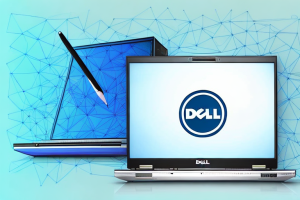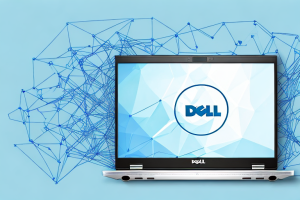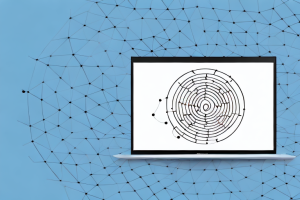How to upgrade the storage on a Dell Inspiron 13 7000
8 min read
A dell inspiron 13 7000 laptop with an open back panel
If you own a Dell Inspiron 13 7000 and you’re running out of storage space, upgrading the storage may be the way to go. Not only does this allow you to store more files and media on your laptop, but it also helps keep your laptop running smoothly. In this article, we’ll cover everything you need to know about upgrading the storage on your Dell Inspiron 13 7000.
Why upgrade the storage on your Dell Inspiron 13 7000?
The most obvious reason to upgrade the storage on your Dell Inspiron 13 7000 is to gain more space to store files. With a higher-capacity drive, you can store more music, movies, photos, and documents without worrying about running out of space. In addition to this, a storage upgrade can speed up your laptop’s performance by allowing it to access files and data more quickly.
Another benefit of upgrading the storage on your Dell Inspiron 13 7000 is that it can extend the lifespan of your laptop. As your laptop ages, it may start to slow down due to the amount of data and files stored on it. By upgrading the storage, you can free up space and improve the overall performance of your laptop, making it feel like new again. Additionally, a larger storage capacity can also allow you to install more software and applications, which can enhance your productivity and overall user experience.
Understanding the different types of storage upgrades available for Dell Inspiron 13 7000
There are two main types of storage upgrades available for Dell Inspiron 13 7000 laptops: hard disk drives (HDDs) and solid-state drives (SSDs). HDDs are the more traditional type of storage device and are typically less expensive. However, SSDs are faster and more reliable, making them a better choice for most users. Both types of drives come in different sizes and capacities, so it’s important to choose the one that best suits your needs.
Another important factor to consider when choosing a storage upgrade for your Dell Inspiron 13 7000 is the interface. HDDs typically use the SATA interface, while SSDs can use either SATA or PCIe interfaces. PCIe interfaces offer faster data transfer speeds, but they are also more expensive. If you need faster performance, it may be worth investing in an SSD with a PCIe interface.
It’s also worth noting that some Dell Inspiron 13 7000 laptops may have limited upgrade options due to their design. Before purchasing a storage upgrade, be sure to check the specifications of your laptop to ensure compatibility. Additionally, if you are not comfortable with installing the upgrade yourself, it may be best to seek professional assistance to avoid damaging your device.
Step-by-Step guide to upgrading the hard drive on a Dell Inspiron 13 7000
If you’ve decided to upgrade the hard drive on your Dell Inspiron 13 7000, here’s how to do it:
- Back up all of your files to an external storage device or cloud service.
- Shut down your laptop and disconnect any peripherals or cords.
- Remove the back cover of your laptop to access the hard drive.
- Disconnect the old hard drive from the cables and remove it from its bay.
- Install the new hard drive in the vacant bay.
- Reconnect the cables to the new hard drive and secure it in the bay.
- Replace the back cover of your laptop and screw it back into place.
- Turn on your laptop and install the operating system and any necessary drivers.
- Copy your backed-up files to the new hard drive.
It’s important to note that before purchasing a new hard drive, you should check the specifications of your Dell Inspiron 13 7000 to ensure that the new hard drive is compatible with your laptop. Additionally, if you’re not comfortable with opening up your laptop and replacing the hard drive yourself, it’s recommended that you seek the assistance of a professional technician to avoid any potential damage to your device.
How to replace the SSD on a Dell Inspiron 13 7000
If you decide to upgrade the SSD on your Dell Inspiron 13 7000, the process is similar:
- Back up all of your data to an external storage device or cloud service.
- Shut down your laptop and disconnect any peripherals or cords.
- Remove the back cover of your laptop to access the SSD.
- Disconnect the old SSD from the cables and remove it from its bay.
- Install the new SSD in the vacant bay.
- Reconnect the cables to the new SSD and secure it in the bay.
- Replace the back cover of your laptop and screw it back into place.
- Install the operating system and any necessary drivers on the new SSD.
- Copy your backed-up files to the new SSD.
It is important to note that not all SSDs are compatible with the Dell Inspiron 13 7000. Before purchasing a new SSD, make sure to check the specifications and compatibility with your laptop model. Additionally, if you are not comfortable with opening up your laptop and replacing the SSD yourself, it is recommended to seek professional assistance to avoid any damage to your device.
Tips for choosing the best storage upgrade for your Dell Inspiron 13 7000
When choosing a storage upgrade for your Dell Inspiron 13 7000, consider the amount of storage space you need, as well as your budget. Keep in mind that SSDs are generally faster and more reliable than HDDs, but they’re also more expensive. If you’re on a tight budget, an HDD may be a better choice.
Another factor to consider when choosing a storage upgrade for your Dell Inspiron 13 7000 is the type of work you’ll be doing on your laptop. If you’re using your laptop for tasks that require a lot of data transfer, such as video editing or gaming, then an SSD may be a better choice. On the other hand, if you’re using your laptop for basic tasks such as web browsing and word processing, then an HDD may be sufficient.
It’s also important to check the compatibility of the storage upgrade with your Dell Inspiron 13 7000. Make sure to check the specifications of your laptop and the storage upgrade to ensure that they are compatible. Additionally, if you’re not comfortable installing the storage upgrade yourself, consider taking your laptop to a professional to have it installed.
Common issues and solutions with upgrading the storage on a Dell Inspiron 13 7000
One common issue that may arise when upgrading the storage on your Dell Inspiron 13 7000 is compatibility. Be sure to check the specifications of your laptop before purchasing a new storage device to ensure compatibility. Additionally, if you encounter issues during the upgrade process, such as errors or installation failures, consult the manufacturer’s documentation or seek professional help.
Another issue that may arise when upgrading the storage on your Dell Inspiron 13 7000 is the physical installation of the new storage device. It is important to follow the manufacturer’s instructions carefully and ensure that the device is properly installed to avoid any damage to your laptop. Additionally, it is recommended to back up all important data before attempting any upgrades to avoid any potential data loss.
It is also important to consider the performance of the new storage device when upgrading. While a larger storage capacity may be desirable, it is important to ensure that the new device has a sufficient read and write speed to avoid any performance issues. Researching and comparing different storage devices before purchasing can help ensure that you choose one that meets your needs and provides optimal performance.
How to clone your existing hard drive before upgrading to a new one
Before installing a new hard drive, it’s a good idea to clone your existing drive. Cloning creates an exact replica of your current drive, including all data and operating system files. To clone your hard drive:
- Connect an external hard drive to your laptop.
- Download and install disk cloning software, such as Clonezilla or Acronis True Image.
- Follow the prompts to create a clone of your existing drive on the external drive.
- Disconnect the external drive and replace the old hard drive with the new one.
- Connect the external drive to your laptop and follow the prompts to clone the data from the external drive to the new hard drive.
It’s important to note that cloning your hard drive can take a significant amount of time, depending on the size of your existing drive and the speed of your computer. It’s recommended to start the cloning process when you have a few hours to spare, and to avoid using your computer for other tasks during the process. Additionally, make sure to double-check that you have enough space on the external drive to store the clone before starting the process.
What to do if you encounter errors during the storage upgrade process
If you encounter errors during the storage upgrade process, there are a few steps you can take to troubleshoot the issue. First, check that all cables and components are properly connected and secured. If errors persist, consult the manufacturer’s documentation or seek professional help.
Another possible solution is to try restarting the upgrade process from the beginning. This can sometimes resolve errors that occurred during the initial attempt. Additionally, make sure that your system meets the minimum requirements for the storage upgrade, such as available disk space and compatible hardware.
If none of these steps resolve the errors, it may be necessary to replace the storage device or seek assistance from a professional technician. It is important to address any errors during the upgrade process promptly to avoid potential data loss or system instability.
Best practices for maintaining your upgraded storage on a Dell Inspiron 13 7000
To maintain the health and performance of your upgraded storage, it’s important to regularly back up your files and run antivirus and antimalware software. Additionally, avoid installing unnecessary programs or files that may clutter your storage and slow down your laptop. Finally, keep your laptop clean and free of dust to prevent overheating and hardware damage.
With this guide, upgrading the storage on your Dell Inspiron 13 7000 should be a breeze. By following these steps and taking proper care of your upgraded storage, you can enjoy a faster and more spacious laptop experience.
It’s also recommended to defragment your hard drive regularly to optimize its performance. Defragmentation rearranges the fragmented data on your hard drive, making it easier and faster for your laptop to access files. You can use the built-in Windows Disk Defragmenter tool or a third-party software to defragment your hard drive.


